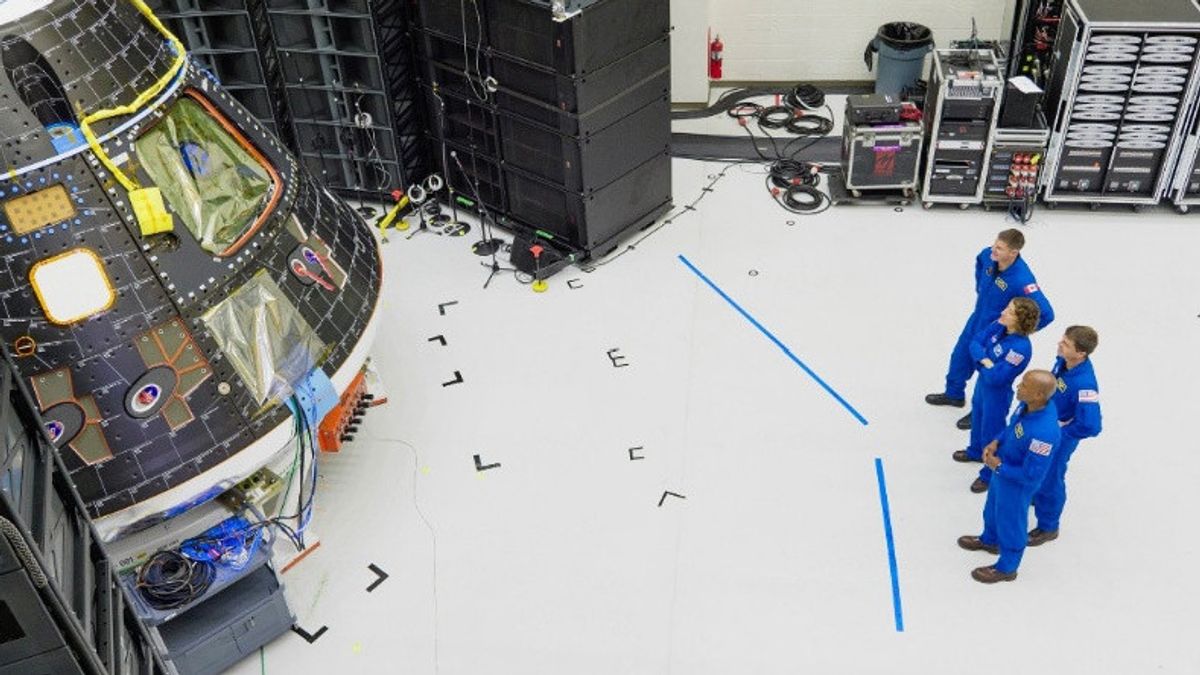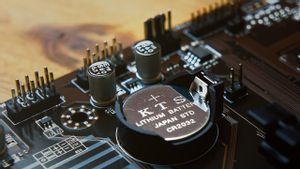JAKARTA - Four astronauts on the Artemis II mission for the first time saw a Orion capsule or spacecraft that would take them to the Moon in 2024.
They are, American (US) astronauts Christina Koch, Victor Glover and Reid Wiseman and Canadian astronaut Jeremy Hansen.
The Artemis II mission will launch in November 2024, but astronauts will not set foot on the Moon, this trip is only to pave the way for landing on Earth's natural satellite in the end, which will be carried out on the Artemis III mission in 2025 if it is on schedule.
The astronauts had the opportunity to peek through the hold of the Orion capsule, most of which had been completed and went through several final tests before being linked to the power module and its propulsion at NASA's Kennedy Space Center in Florida, USA.
#Artemis II Crew, meet your ride to the Moon! pic.twitter.com/5d83uxTju9
— Orion Spacecraft (@NASA_Orion) August 8, 2023
#Artemist II Crew, meet your ride to the Moon! pic.twitter.com/5d83uxTju9
"When we first stick out our heads and you look around there, you realize, this can only be one thing, a spacecraft. Nothing looks like that and that's how I feel, that's what gives me goosebumps," said Koch, who is also a specialist in the Artemis II mission.
The Orion crew module is 5 meters long nearly 4 feet wider than the Apollo command module from the first era of lunar exploration.
Piles of strong loudspeakers also surround the capsule on the three sides. The top of the spacecraft is in the form of a gumdrop covered in a black silica tile.
At the bottom, the main heat shield of the spacecraft installed capable of holding the temperature to nearly 2,800 degrees Celsius, was generated at the end of the mission when the capsule crashed back through Earth's atmosphere which is equivalent to 32 times the speed of sound.
SEE ALSO:
This weekend, loudspeakers will begin detonating the Orion crew module that mimics the acoustic energy of the rocket launch. Field acoustic tests were immediately designed to ensure the spacecraft could cope with intense sounds from NASA's Space Launch System (SLS) rocket engines and rocket boosters, which will send the Artemis II crew into space.
The final touch on the Orion crew module has taken longer than expected, and a connection of the two Orion modules is now expected to be installed in mid-September, two to three months later than NASA expected earlier this year, as quoted by Ars Technica, Thursday, August 10.
"It's great to look inside. The suitability and finish is so beautiful. It's great to see the hardware that is actually all united," said the Wiseman astronaut who is also the mission commander of Artemis II.
"The things we've learned so far in training, to see it for real on the spacecraft, it gives you a good understanding of how far. The hardware is almost ready."
The English, Chinese, Japanese, Arabic, and French versions are automatically generated by the AI. So there may still be inaccuracies in translating, please always see Indonesian as our main language. (system supported by DigitalSiber.id)


















